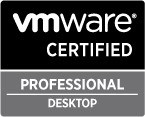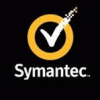As written in the VMware Data Recovery (VDR) as a backup solution post, VDR could be a possible backup solution for small environment (if there are big budget constraints).
But some issues are really quite difficult to handle with this appliance and the biggest one is the integrity of CIFS NAS destinations.
If you cannot avoid them and for some reason you cannot limit them to 0.5 TB for each destination, you may have some integrity check errors (sometimes).
Most of them could depend by some damaged restore points, in this case you can view them in the restore tab and choose to delete. Usually after a new integrity check (when also a reclaim occurs) those restore points will be fixed. But in some cases this trick does not work, or other errors are the reason of a integrity check fail.
In this case the only solution is follow the KB 1015901 (VMware Data Recovery backups fail with the error: failed, error -2241 (Catalog File invalid/damaged)) to recreate the catalog files:
- Verify that there are no operations running on the appliance.
- Stop the datarecovery service. See Restarting the datarecovery service on a VMware Data Recovery appliance (1036768)
service datarecovery stop - Delete the following files in the dedupe store mount point:
- /{dedupe mount point}/VMwareDataRecovery/BackupStore.cat
- /{dedupe mount point}/VMwareDataRecovery/BackupStore.cat.bak
Note: The restore points are temporarily deleted.
- Start the datarecovery service. A restart of the VDR virtual machine will similarly restart the service.
service datarecovery start - Run an integrity check on the destination directory to recreate the catalog files. The integrity check rebuilds the BackupStore.cat files, and repopulate VDR with all restore points.












